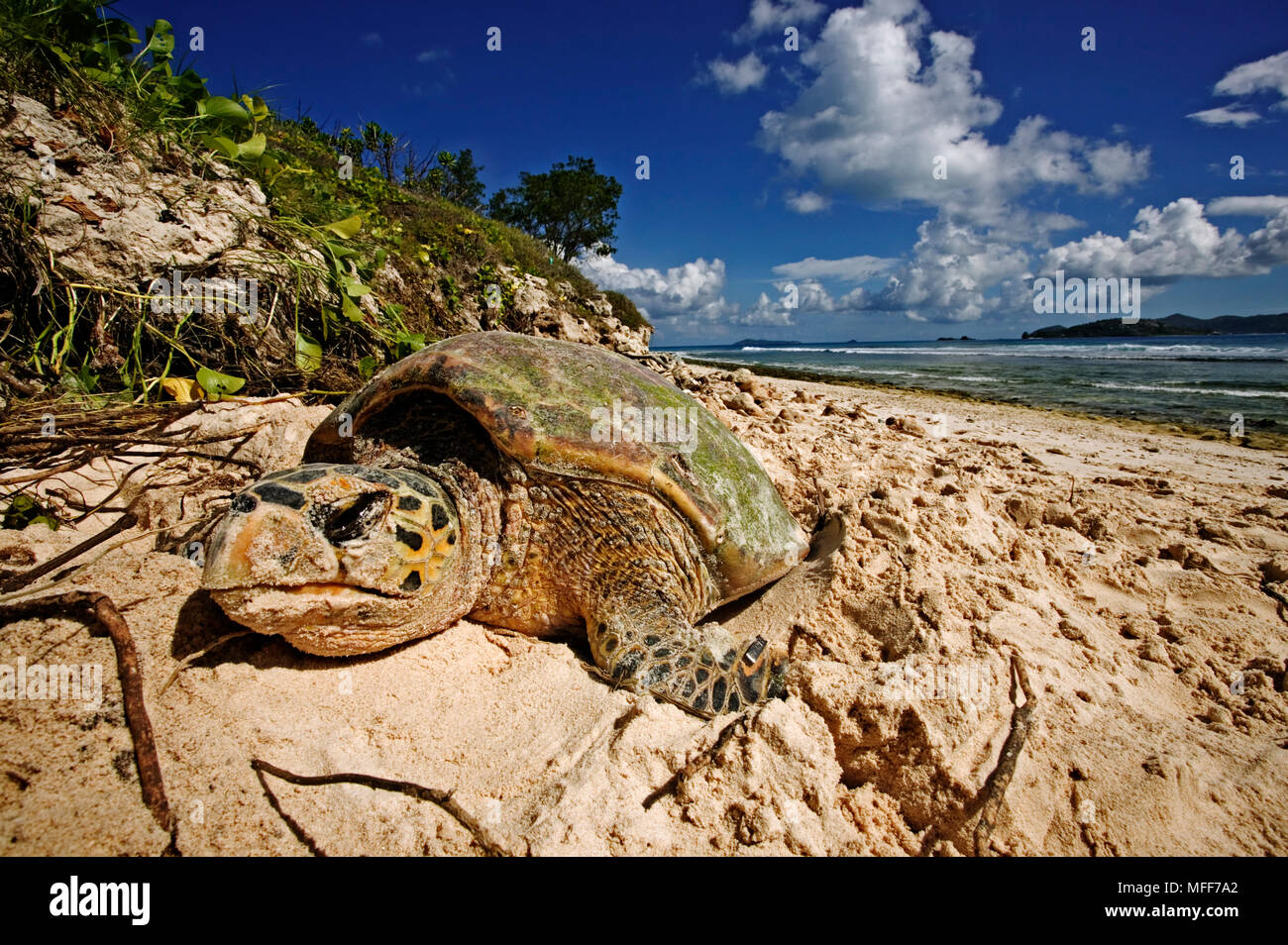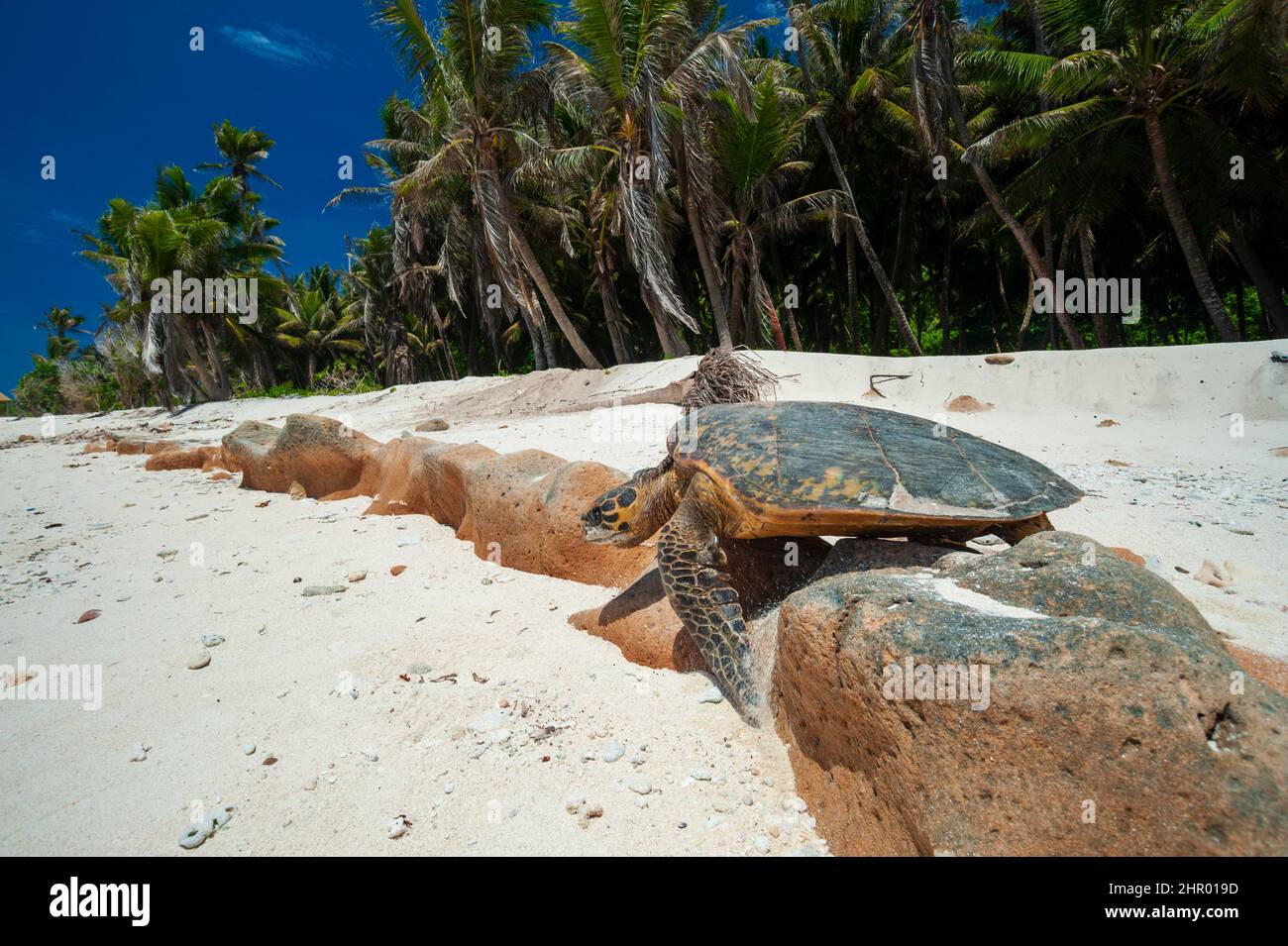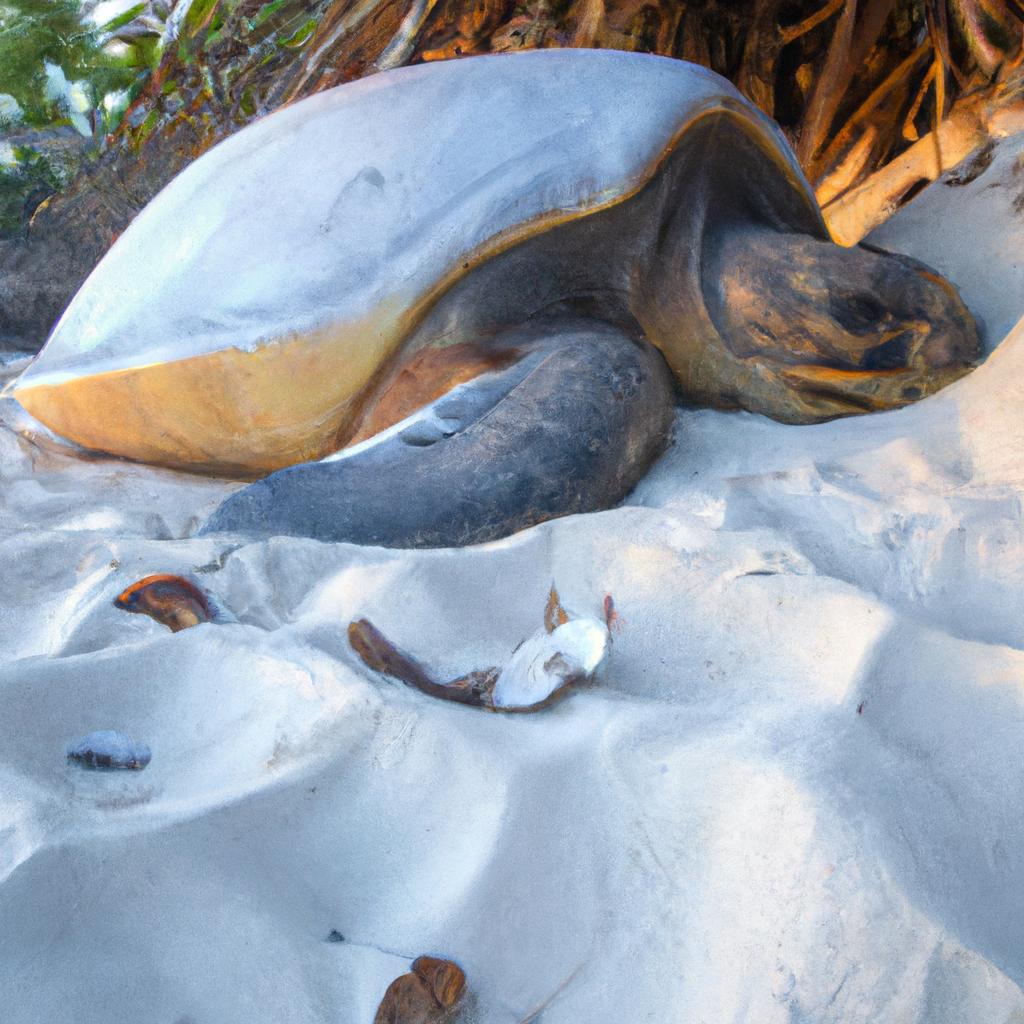
Guardians of the Tide: Seychelles’ Sacred Turtle Nesting Shores
The Seychelles archipelago, a scattering of emerald jewels across the cerulean canvas of the Indian Ocean, is renowned globally for its unparalleled natural beauty, from towering granite peaks to pristine coral reefs. Yet, beneath the shimmering surface of its tourist brochures lies a deeper, more ancient story – one etched into the sands of its secluded beaches, where marine turtles have performed their timeless ritual of nesting for millennia. These shores are not merely picturesque; they are the cradle of life for two of the ocean’s most iconic and vulnerable creatures: the Green Sea Turtle (Chelonia mydas) and the Hawksbill Turtle (Eretmochelys imbricata).
Seychelles stands as a critical global stronghold for these magnificent reptiles, offering sanctuary in a world where their populations have been decimated by human activity. The nation’s commitment to conservation has transformed many of its islands into vital havens, making its nesting beaches a beacon of hope for species teetering on the brink.
The Ancient Mariners: Green and Hawksbill Turtles
The Green Sea Turtle, a majestic herbivore often weighing over 150 kg, is named not for its shell but for the greenish fat beneath its carapace. It roams vast stretches of ocean, migrating thousands of kilometres between foraging grounds and nesting sites. In the Seychelles, particularly on the remote atoll of Aldabra, Green Turtles find one of the largest nesting aggregations in the entire Indian Ocean, a testament to the archipelago’s untouched wilderness.
Equally significant, but distinct in its habits, is the Hawksbill Turtle. Smaller and more agile, with a distinctive, pointed beak resembling a raptor’s, the Hawksbill is a critically endangered species, primarily feeding on sponges in coral reefs. Uniquely, Hawksbills in the Seychelles often nest during daylight hours, a rare phenomenon that offers researchers and fortunate observers a glimpse into their secretive world. Islands like Cousin and Aride are particularly vital for Hawksbill populations, hosting some of the highest nesting densities recorded globally.

The Sacred Ritual: A Journey Etched in Instinct
The act of nesting is a profound and perilous journey, driven by an instinct older than human civilisation. After migrating from distant foraging grounds, often returning to the very beach where they were born decades earlier, the female turtle awaits the opportune moment – typically under the cloak of darkness for Green Turtles, or occasionally by day for Hawksbills.
She emerges from the waves, a silhouette against the moonlight, and begins the arduous crawl up the beach, dragging her massive body through the soft sand. Using her powerful flippers, she meticulously excavates a body pit, then a deeper, flask-shaped egg chamber, often reaching over half a metre deep. In a trance-like state, she deposits her clutch – typically 80 to 200 soft-shelled, golf-ball-sized eggs – each one a fragile promise of future life.
Once the last egg is laid, she meticulously covers the nest, using her rear flippers to pack the sand, disguising the site from predators. Finally, exhausted but her mission complete, she makes her slow, deliberate journey back to the sea, disappearing beneath the waves, leaving behind only the tracks in the sand and the hidden treasure below. The eggs will incubate for roughly 60-70 days, dependent on sand temperature, which also crucially determines the sex of the hatchlings – warmer sands typically produce more females.
Sanctuaries of Sand: Key Nesting Beaches
Seychelles’ commitment to conservation has seen numerous islands designated as protected areas, each playing a vital role in the survival of marine turtles:
-
Aldabra Atoll: A UNESCO World Heritage Site, Aldabra is the world’s second-largest coral atoll and a remote natural fortress. Its pristine beaches are a haven for Green Turtles, boasting a population estimated at over 10,000 nesting females annually. The Seychelles Islands Foundation (SIF), which manages Aldabra, conducts long-term monitoring programmes that are crucial for understanding global Green Turtle dynamics. Dr. Frauke Fleischer-Dogley, CEO of SIF, notes, "Aldabra’s isolation has been its greatest protector. It allows us to study turtle populations in a relatively undisturbed environment, providing invaluable data for conservation efforts worldwide."

-
Cousin Island Special Reserve: Managed by Nature Seychelles, Cousin is a small granitic island that has become a shining example of successful conservation through ecotourism. Once a coconut plantation where turtle eggs were harvested, it was purchased in 1968 and transformed into a nature reserve. Today, it hosts one of the highest densities of nesting Hawksbill Turtles in the world. Visitors, guided by wardens, can often witness Hawksbills nesting by day, a truly unique experience that directly funds the island’s conservation work.
-
Aride Island Nature Reserve: Located north of Praslin, Aride is another critical sanctuary managed by the Island Conservation Society (ICS). Its untouched beaches and dense vegetation provide ideal nesting conditions for both Green and Hawksbill Turtles. The island’s strict protection regime ensures minimal human disturbance, allowing turtle populations to thrive.
-
North Island & Denis Island: These luxury private island resorts exemplify how high-end ecotourism can directly contribute to conservation. Both islands have robust environmental programmes, including dedicated turtle monitoring and protection initiatives. Guests often have the privilege of witnessing nesting or hatching events, fostering a deep connection to nature and financially supporting the extensive work undertaken by resident conservation teams. "Our guests don’t just come for luxury; they come for an authentic connection to nature," explains a conservation manager at North Island. "Protecting these nesting turtles is not just our responsibility; it’s a cornerstone of the North Island experience, ensuring a future for these incredible creatures."
-
Frégate Island Private: Similar to North and Denis, Frégate Island has invested significantly in restoring its natural environment, including its turtle nesting beaches. Its conservation team meticulously monitors nests, protects hatchlings from predators, and gathers vital data on nesting patterns.
The Pillars of Protection: Conservation Efforts
Seychelles’ impressive turtle populations are not merely a stroke of luck but the result of decades of dedicated and multi-faceted conservation efforts:
- Legal Protection: Marine turtles have been fully protected by law in Seychelles since 1994, making it illegal to hunt, collect eggs, or disturb nesting sites.
- Monitoring and Research: NGOs like SIF, Nature Seychelles, and the Marine Conservation Society Seychelles (MCSS) conduct extensive tagging programmes, satellite tracking, and daily beach patrols during nesting seasons. This data provides crucial insights into migration patterns, nesting frequency, population health, and the impacts of environmental changes.
- Habitat Protection: The establishment of Marine National Parks and Special Reserves has safeguarded critical nesting and foraging habitats from development and exploitation.
- Community Engagement and Education: Local communities, especially children, are educated about the importance of turtles and their role in the marine ecosystem, fostering a sense of stewardship. Many local rangers and guides are integral to monitoring efforts.
- Ecotourism: As seen with Cousin, North, and Denis Islands, sustainable tourism provides significant funding for conservation projects, creating a direct economic incentive for protection.
The Shadow of Threat: A Continuing Battle
Despite these successes, the future of Seychelles’ marine turtles is far from secure. They face formidable challenges, many of which are global in nature:
- Climate Change: Rising sea levels threaten to inundate low-lying nesting beaches, eroding critical habitat. Perhaps even more insidious is the impact of rising sand temperatures, which can skew the sex ratio of hatchlings, leading to a disproportionate number of females and potentially jeopardising future breeding success.
- Plastic Pollution: The Indian Ocean is increasingly plagued by plastic debris. Turtles can become entangled in discarded fishing nets and plastic bags, or ingest plastic fragments, mistaking them for food, leading to internal injuries and starvation.
- Bycatch in Fisheries: Although direct hunting is largely eliminated, turtles still face the threat of accidental capture in fishing gear (bycatch), particularly in longlines and gillnets.
- Coastal Development: While protected areas exist, coastal development in some non-protected areas can lead to habitat degradation, light pollution (disorienting hatchlings), and increased human disturbance.
- Historical Legacy: Decades of intensive exploitation for meat and shells (especially Hawksbill for its valuable "tortoiseshell") have left deep scars on populations, from which they are still recovering.
A Future on the Horizon
The nesting beaches of Seychelles are more than just stretches of sand; they are living testaments to the resilience of nature and the power of dedicated conservation. The sight of a female turtle laboriously digging her nest, or the frenetic scramble of tiny hatchlings towards the shimmering sea, is a powerful reminder of the delicate balance of life on Earth.
Seychelles has demonstrated that with political will, scientific dedication, and community involvement, it is possible not only to protect but to revive endangered populations. However, the fight is far from over. As global challenges like climate change intensify, the role of these island guardians becomes ever more critical. Their ongoing efforts on these sacred shores offer a glimmer of hope that the ancient ritual of the tide, the quiet miracle of life emerging from the sand, will continue for generations to come, ensuring that these magnificent creatures remain an integral part of the Indian Ocean’s vibrant tapestry.

